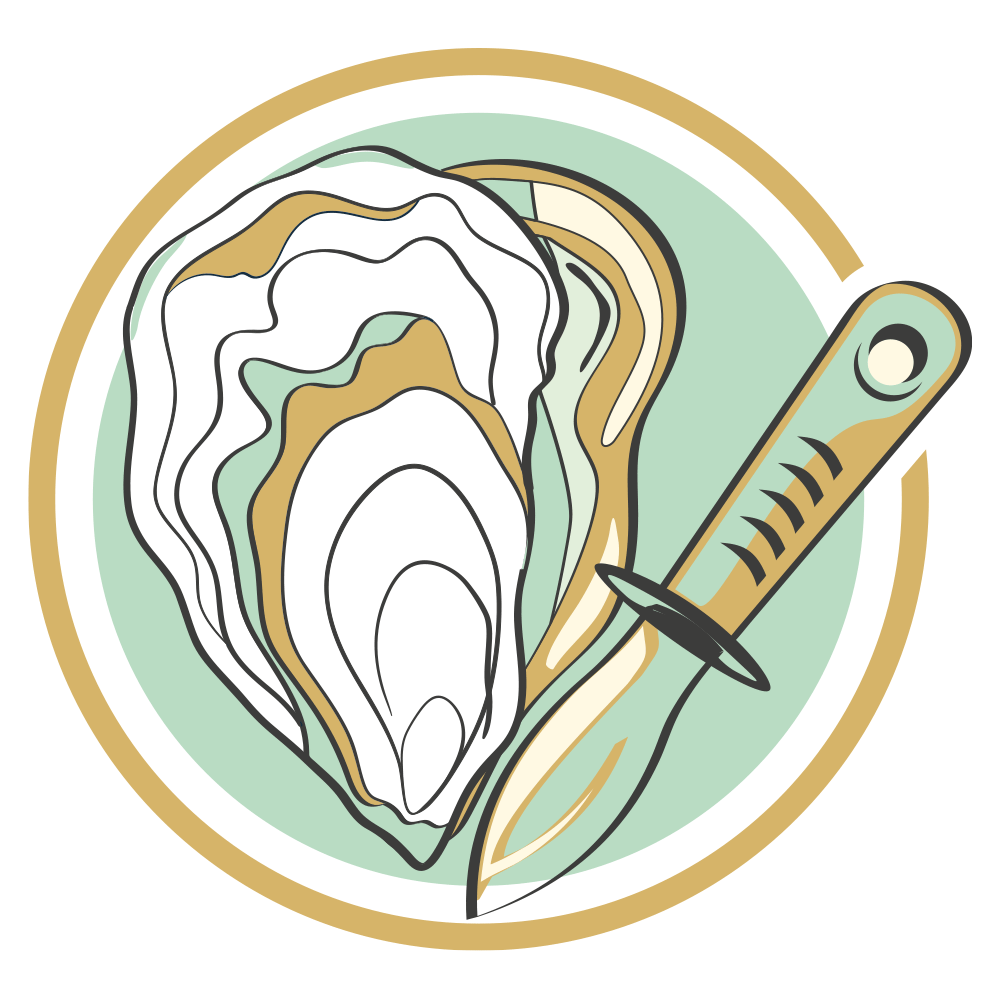 生蚝养成记 GEAY 牡蛎
生蚝养成记 GEAY 牡蛎
1. 收集蚝苗
每年夏天,成年生蚝会在 Marennes Oléron 水域释放大约一百万个卵。吉利团队会有战略 性地选择适合的地方安放上附着基,但是只有 极小部分的卵会固定在附着基上并长成幼虫。一旦幼虫固定了,会在附着基上进食并生长,最后这些幼虫就会长成幼蚝。在幼蚝出生9个 月后长至手指甲大小时,吉利团队会小心地从 附着基上取下蚝苗开始下一步的养殖。

2. 生蚝养殖
接下来为了更好地利用潮汐带来的自然作用,生蚝会被安放到海边的生蚝场,在成长过程中 会得到悉心的照料:吉利公司追求的不是生蚝 迅速的长成,而是想要通过最耐心的照料得到 品质最好的生蚝。为了让生蚝集中精力长肥美 程度而不是长壳,需要经常翻转网袋以此严格 控制生蚝壳的生长。生蚝会被混合在一起,清 洗,根据大小分号,然后进行养殖点的转移。在生蚝成长过程中还需要定期进行转移,因为 每一片海水都是独特的,光照、水质、水温等 不同的条件,都会为每一只生蚝带来不同的风 味。这一系列工作会持续3-5年,最后我们就可 以得到肥美鲜甜的吉利生蚝。

3. 沼泽濯养期
经过对生蚝形状、厚度等一系列严格筛选,吉 利生蚝会被放在Marennes Oléron的沼泽(养 肥池)里养殖。这些养肥池是由法国海边常见 的旧盐场改造而来的,是Marennes Oléron地 区的典型代表。养肥池内丰富的沉淀物和浮游 生物为生蚝带来了独特的鲜味和芳香。

« 生蚝的养殖需要巨大的耐心和悉心的照料。
一般要经过3-5年超过50道工序才能得到品质优良的吉利生蚝。 »
 根据生蚝的重量和大小进行分号 GEAY 牡蛎
根据生蚝的重量和大小进行分号 GEAY 牡蛎

 开蚝有序 GEAY 牡蛎
开蚝有序 GEAY 牡蛎
1

把生蚝放在您的手心,手 指放在离刀尖1厘米处。
2

找到生蚝两块壳中间的缝 隙,在四分之三处轻轻用 刀尖插入。
3

上下滑动刀刃,慢慢割断 生蚝上面的横断肌。
4

一旦这块连壳的蚝肥美 程度被切断,您就可以 完美轻松地把上面
5

最后倒出多余的水分,清 理一下小碎壳,就可放到 盘子上准备食用。
 生蚝保存 GEAY 牡蛎
生蚝保存 GEAY 牡蛎
- 生蚝切勿与冰直接接触,为了确保生蚝的鲜味和保证打好包装后仍能有十天寿 命,
- 保存的温度需要保持在5度-15度。
- 这个温度会对外部环境有影响, 外壳温 度越高,就会越接近适合生蚝生存的温度。

 尊重口味 GEAY 牡蛎
尊重口味 GEAY 牡蛎
口味
生蚝在离开水面3-7天后是最佳品尝时间,离水 几天的生蚝会比刚从水中出来的生蚝好吃。
开场
在品尝之前2-3小时前可以打开生蚝, 但为了 不让生蚝变干,记得要重新盖上生蚝壳子。
葡萄酒
享用生蚝的时候,我们建议配干白葡萄酒。
 « 三葱 » 烤生蚝 请享用
« 三葱 » 烤生蚝 请享用
材料(4人份)
- 生蚝 X 12 Spéciales GEAY
- 大葱 X 2
- 洋葱 X 1
- 红葱头 X 2
- 牛油 20克
- 干白葡萄酒 10 cl
- 奶油 2汤匙
- 格鲁耶尔干酪
准备
- 步骤
打开生蚝,将烤箱预热至180°C。 - 步骤
洗净大葱、洋葱、红葱头并切成小块。融化牛油放入蔬菜小火炒。 - 步骤
加入盐、胡椒粉、白葡萄酒和奶油,小火煮5分钟。 - 步骤
将酱汁铺在生蚝表面,撒上碎格鲁耶尔干酪,烘烤15分钟。

 营养与健康 牡蛎的实践
营养与健康 牡蛎的实践
自古以来,牡蛎就因其多种功效而受到人们的推崇和食用,且在不同文化中有所不同。它们被认为是一种精致而珍贵的美味,因其壮阳的功效而受到罗马和希腊社会精英的青睐,这一品质持续吸引着挑剔的美食家的关注。
如今,牡蛎主要因其富含微量元素、矿物质和维生素的清淡健康食品声誉而受到重视。由于富含 Omega-3,它对心血管健康有显著的益处,从而凸显了其在均衡饮食中的特殊地位。
它们含有如此丰富的生命元素,以至于人们仅靠食用它们就能生存。

« 上次世界大战期间,一些在太平洋战役中幸存的飞行员因牡蛎而获救,牡蛎是他们唯一可以安全食用的食物,并且牡蛎可以为他们提供大量生存所需的营养。 »




